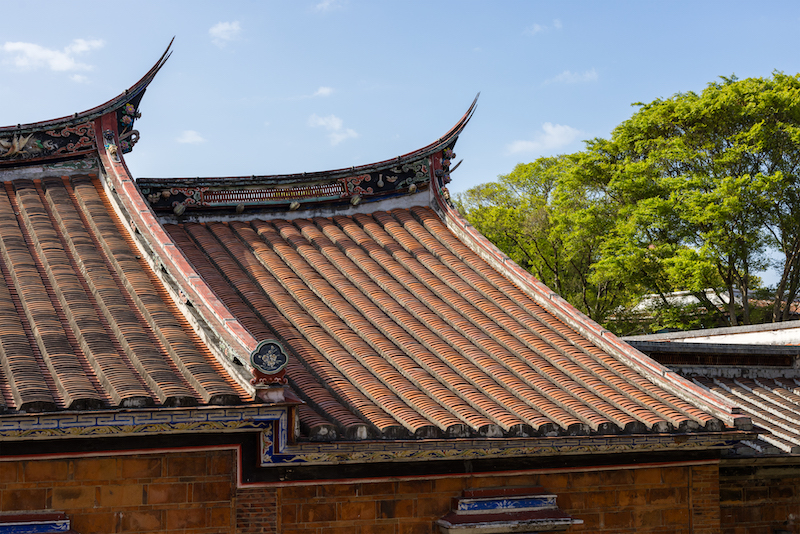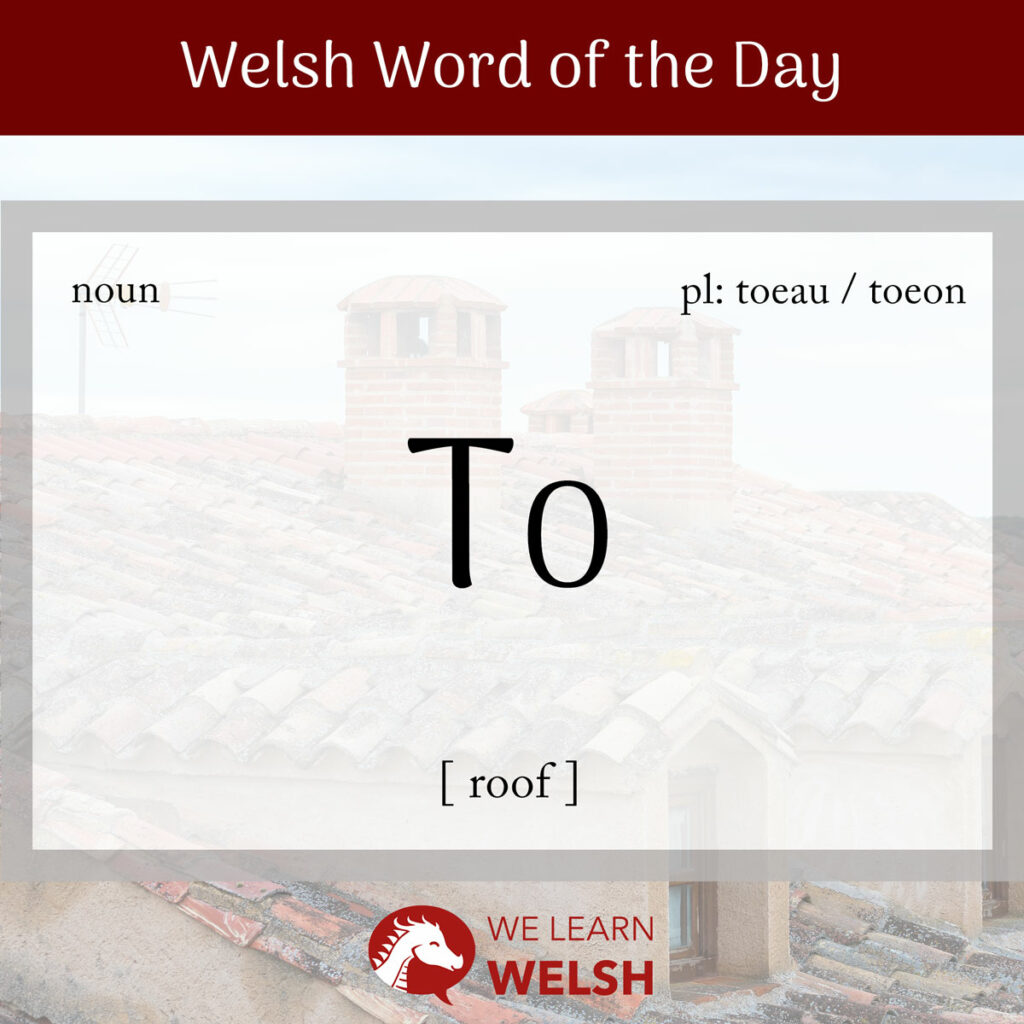The Welsh word for a roof is the very simple to, a masculine noun with the plural forms toeau and toeon (roofs).
It’s an easy one to confuse, because people often shorten eto (again) to to colloquially. Plus, since it looks like the English word to, a lot of people mispronounce it.
to
roof
toeon
roofs
toeau
roofs
To came from a proto-Celtic root word that was probably something along the lines of *togos. It is hypothesised to have meant a covering or just a roof. It can also sometimes become toi (to roof / to construct a roof) although most people would just say dodi to or rhoi to.
It mutates like this:
Soft mutation
do
Nasal mutation
nho
Aspirate mutation
tho
But it doesn’t show up in mutated form particularly often.
There are a couple of synonyms for this word you can find in various dictionaries. In my experience, the only one that’s used much in day to day life is the simple pen tŷ (the head of the house), but to still comes out on top.
One key phrase you might have heard is to bach. This literally means little roof, and is used to describe the circumflex accent, as in the words môr (sea) or tŷ (house). It’s also sometimes called an acen grom (bent accent).
The to bach is one of four acennau (accents) in Welsh, but it’s by far the most important – the three others are the acen ddisgynedig (descending accent or grave accent), acen ddyrchafedig (elevated accent or acute accent), and the didolnod (separate-mark or diuresis).
But the to bach is by far the most important and common. All of the others are very often omitted in writing.
On the other hand, it’s really important to get it right when it comes to including a to bach – and when not to – because there are loads of words in Welsh whose meanings change completely depending on whether it’s there or not. The pronunciation changes too, as the to bach lengthens the vowel sound. For example, the word hyn (“this”) would phonetically be spelled hin in English, while hŷn (“older”) would be heen.
One common mistake I’ve noticed among learners is misspelling to as tô. I’m sure that this is because many people mistakenly assume that the word for roof should have a little roof itself!
This isn’t the only non-literal usage of the word. Interestingly, to in Welsh is also sometimes used to mean generation. This tends to be specifically in terms of oed (age) and the relationship between the cenedlaethau (generations). For example, the older generation can be called y to hŷn, and the younger generation is y to iau.
These phrases won’t be well known or used throughout the country, so use them with caution.
What is universal across Wales is the expression rhoi’r ffidil yn y to. This means to give up and has got to be one of the most common Welsh idioms there is. Literally, it means to put the fiddle in the roof. It’s a kind of rough equivalent to the English to throw in the towel. A similar expression – though it’s a bit less common – is rhoi’r bêl ar do (putting the ball on the roof), meaning to put an end to things.
Ar ôl y storm, mae’r to yn gollwng.
After the storm, the roof is leaking.
But when it comes to actual, physical toeon, there are plenty of different defnyddiau (materials) they can be made out of. The to a tŷ has usually depends on the period of time in which it was built.
- to gwellt = thatched roof
- to llechi = slate roof
- to dur = steel roof
- to gwydr = glass roof
- to asffalt = asphalt roof
- to clai = clay roof

These days, eco-friendly options are becoming popular, too, with many people choosing to install paneli solar / paneli haul (solar panels), or even go for a to gwyrdd (green roof) made from real planhigion (plants).
There are also different options for the style of the to, like a to cribog (ridge roof), talcendo (hip roof), or to gwastad (flat roof). The last is very appealing because you have the option of creating a teras to (roof terrace) or even a gardd ben to (roof garden)!
Or you could add a ffenestr do (skylight, literally roof window) to bring a bit of extra golau (light) into the dan do (indoors, literally under a roof).
Tai (houses) aren’t the only things that have toeon – so do ceir (cars). Particularly popular is a to agor / to haul (sunroof), but they’re less convenient because you can’t have a rhesel ben to (roof-rack).
You might have come across the phrase ben to too. It literally means head of the roof, but it really means on top of the roof. It turns up in one of my favourite Welsh kids’ songs:
Mi welais Jac y Do,
Yn eistedd ar ben to,
Het wen ar ei ben a dwy goes bren
Ho ho ho ho ho ho!
I saw Mr Jackdaw
Sitting on top of the roof
A white hat on his head and two wooden legs
Ho ho ho ho ho ho!

